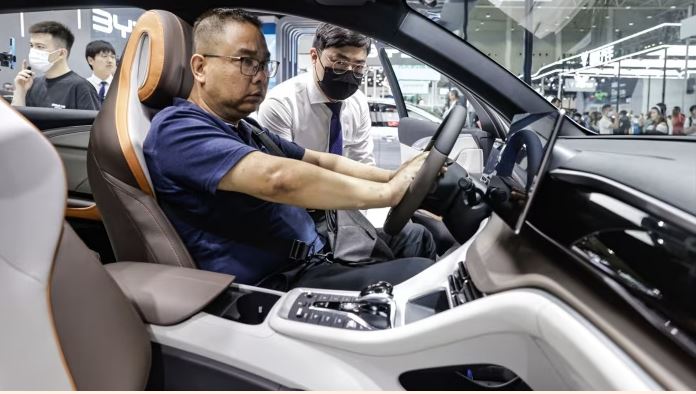China’s electric vehicles threaten to leave Europe in the dust
The historical parallel is with the push into the US by Japanese carmakers in the 1970s
 Khodocar - The best-selling budget electric car in China sells for about $5,000. A fall in prices to such affordable levels helped almost double China’s passenger electric vehicle sales last year. At 5.9mn units, sales more than twice outstripped the combined total for Europe and the US.
Khodocar - The best-selling budget electric car in China sells for about $5,000. A fall in prices to such affordable levels helped almost double China’s passenger electric vehicle sales last year. At 5.9mn units, sales more than twice outstripped the combined total for Europe and the US. At the same time, the industry is struggling with overcapacity created by aggressive investment in the last decade. Geopolitical tensions and government policies spawned by them make the US market complicated to enter. As a result, Europe has become the key target for Chinese EV makers searching for new markets. That brings fresh urgency to European automakers’ efforts to catch up.
Nearly half the cars exported from China are now sold in Europe. The figure rose about 60 per cent last year. Around two-thirds were battery electric cars. The historical parallel is with the push into the US by Japanese carmakers in the 1970s — which offers a hint of what may come in Europe.
For now, though, the number of Chinese-branded EVs on the roads in Europe remains relatively low. Of the exports from China to Europe, almost 40 per cent were Teslas. European and Chinese joint ventures accounted for a tenth.
Nonetheless, Chinese EV exports are growing at a much faster pace than analysts previously anticipated. In south-east Asia, another key market, Chinese automakers dominate, accounting for three-quarters of all EVs sold. That makes Europe even more important in their search for growth.
Historically, Europe has exported far more cars to China than it has imported. But the switch to electric cars has brought with it a change in buying patterns. Consumer preference has shifted to domestic brands, accounting for 80 per cent of newly registered electric cars in China.
Europe has understandable concerns about competition from Chinese EV makers. The region’s indigenous auto industry is key to economic growth and jobs. The European Commission’s probe into China’s subsidies for EVs may mean higher import duties on Chinese EVs.
Such a move would make them less competitive in Europe in the short term, braking expansion in the largest car market outside China and the US. But longer term, it is questionable whether potential tariffs would hold Chinese manufacturers back. In fact, their EVs may only get cheaper.
The biggest driver of the rush is overcapacity. About 200 companies make far too many cars for the local market. Production capacity is expected to surpass 15mn units, a figure that is about twice the expected local demand. Excess capacity is even worse in battery manufacturing. By 2025, production by some 50 companies is expected to exceed demand four times over.
The renminbi, which is at its weakest level in 16 years, also gives EV companies an edge when converting foreign currency receivables to renminbi. Local prices of raw materials including battery-grade lithium carbonate have plunged this year, cutting costs of the battery, the most expensive EV component.
Meanwhile, local investment in sodium-ion batteries for small EVs is accelerating. These lack the energy density of lithium counterparts but are expected to cost around half that of average lithium-ion cells. All this allows further price cuts, all while easing margin pressures.
Starting with small, cheap cars to win over the mass market segment has been effective in the past. It is worth looking back at the 1970s, when Japanese automakers first started gaining traction in the US. Unable to compete with European rivals on design and engineering, Japanese brands offered value.
At low enough prices, tariffs did little to slow their market share grab in the following decades. Toyota, for example, now has the second-largest market share in the US, behind only GM. Chinese EVs may lack glamour. But the average EV price has about halved in China over the past eight years. In Europe, prices have risen.
The EU aims to have at least 30mn electric vehicles on the roads by 2030, up from about 3mn last year, which will turbocharge growth of the region’s mass market EV segment.
The immediate focus for European electric carmakers, therefore, should be on ensuring resources are directed towards driving down production costs using proven technologies, even if that means early models lack the design flair and character of their gasoline counterparts. Innovation is important and tariffs can buy time. But European EV makers will need to be more competitive on cost.
Latest News


